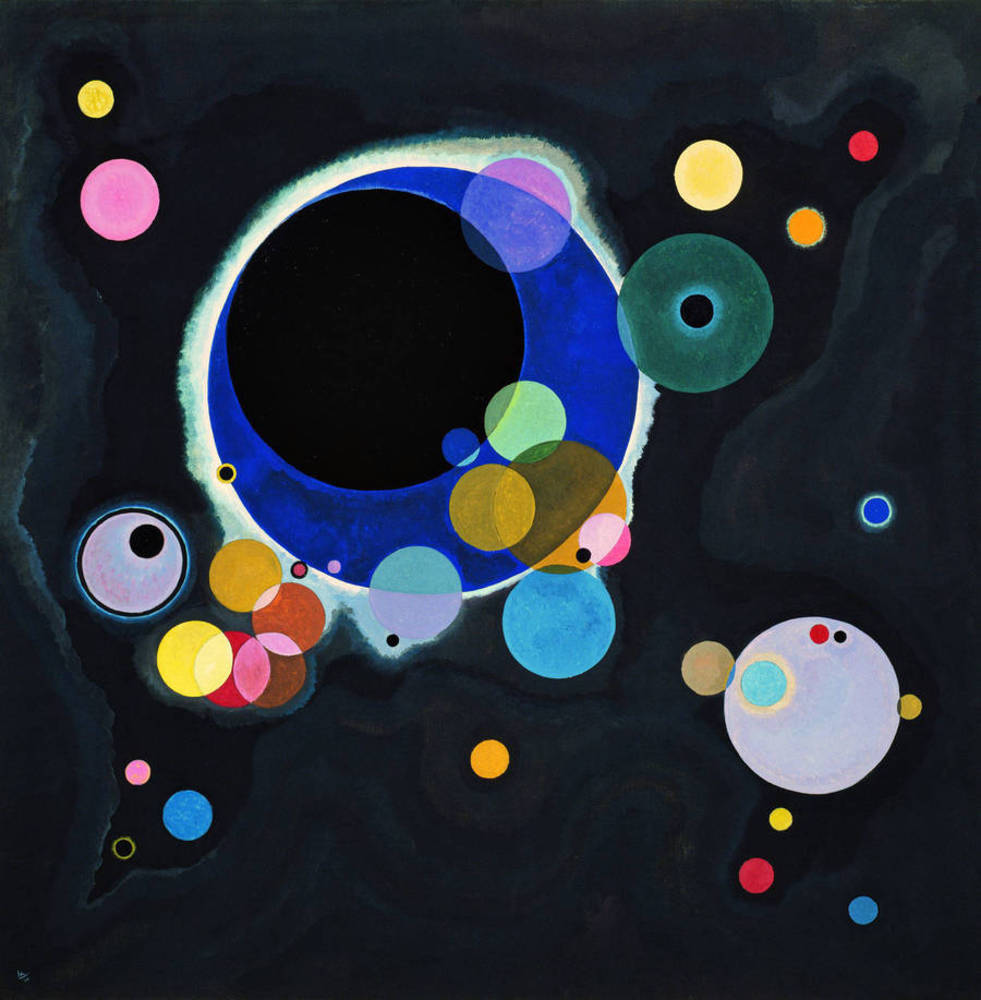Wassily Kandinsky, from childhood, was fascinated by colors and their symbolism. He explained them as the keyboard, relating it to the piano and its art. He valued "inner necessity", or a devotion to inner beauty and spirit. He started with bright and colorful, more realistic paintings, but became more focused on the viewer perspective after inspiration from Monet's "Haystacks". Possibly from that point, his works became increasingly more abstract. It is thought that he painted one of the first abstract works. Especially in the abstract works, Kandinsky focused on the importance of shapes and colors. He viewed colors to have different tonalities and often found a strong link between music and color. As for shapes, he seemed to favor circles, and said that circles are the "synthesis of the greatest oppositions".
(source: https://en.wikipedia.org/wiki/Wassily_Kandinsky)
(source: http://www.guggenheim.org/new-york/collections/collection-online/artwork/1992)
